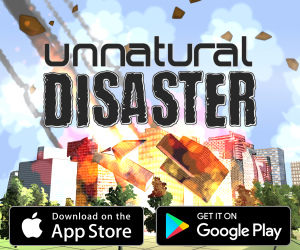
July 26 – August 31, 2019 (Summer)
Greeting: Buna
Gratitude: Mulțumesc
Visa: 90 days in 180
Cost of living: Low
The sun begins to sink and the air alights with pastel hues. Summer’s baking heat begins to bleed off the sunburned earth, and a cool breeze floats off the lake. Families amble lazily around the boardwalk, keeping a relaxed eye on their playing children, shedding the last of their day’s energy, or celebrating the peak of the season with an ice cream✨.
Valea Morilor Lake is the perfect place for an evening stroll in Chișinău, and a treat few outsiders have enjoyed. Moldova is by far the least touristed country in Europe and its reputation, insofar as it has one, is unglamorous. But we found these impressions superficial and unfair. Chișinău offers a relaxed, low-key vibe, great wine, and a low cost of living compared to other capitals. The low tourist pull was an asset rather than a liability. Not only were crowds few, but a country unaccustomed to tourists is also void of pushy touts or “beaten paths.” No, there’s not a lot of street lights, and some sidewalks are crumbling, and not every bus✨ is up to modern✨ standards. But we didn’t care. Chișinău enchanted us.
Where we stayed
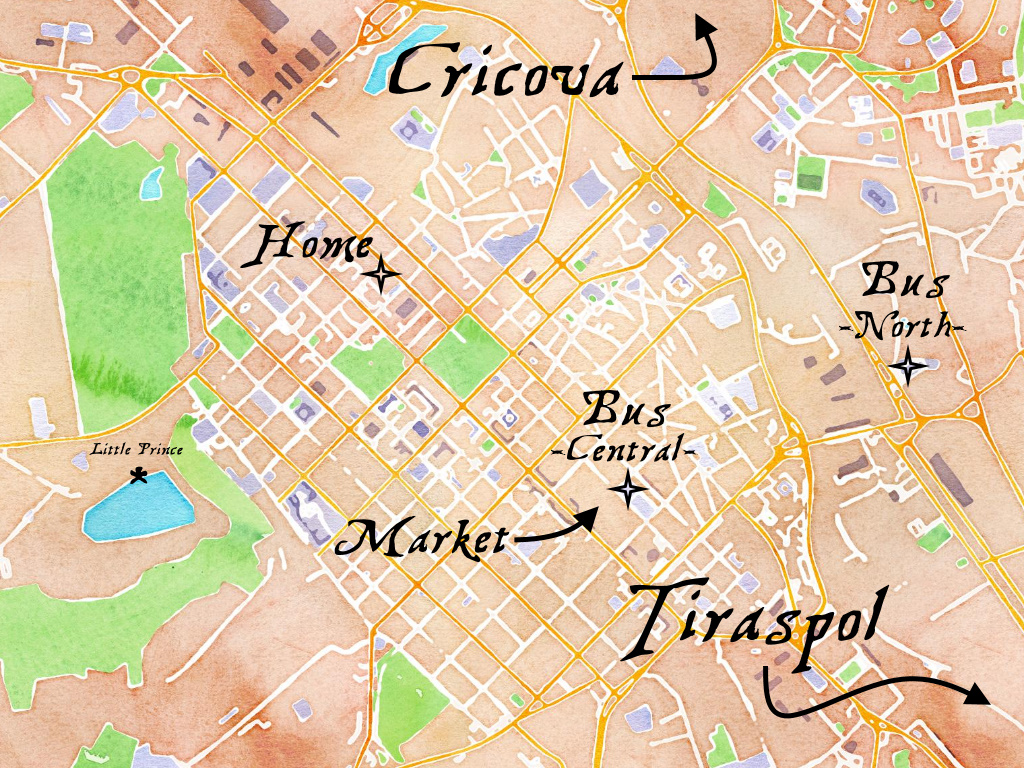
Our Airbnb this month, nestled in the shadow of the Presidential Palace✨, was about as central as possible. Transit, groceries, restaurants, and wine bars were all within a minutes’ walk. A bit further were the central squares, theaters, and museums.
The interior was spacious and well laid-out, far more than last month. A large living room bounded to one side by kitchen✨ and dining space, and opening on the other to a quiet and insulated bedroom✨. It was cleaner, prettier, and more modern than we hoped. We trekked all the way to the building’s top floor. Great for peace and quiet, less so for staying cool in the summer sun. But we had shades and air conditioning for the days, and screened (!) windows for nights. Unfortunately these welcome barriers didn’t stop a handful of pesky mosquitoes from getting inside, and we were left with some nasty welts to show for it.
Our building was insulated from the street by a heavy gate, enclosing a private garden. It overflowed with trees and flowers. The handful of cats calling it home grew more accepting of us over time. Living life at a slower pace, lacking in luxury but enjoying existence nonetheless, they seemed to embody the spirit of this place.
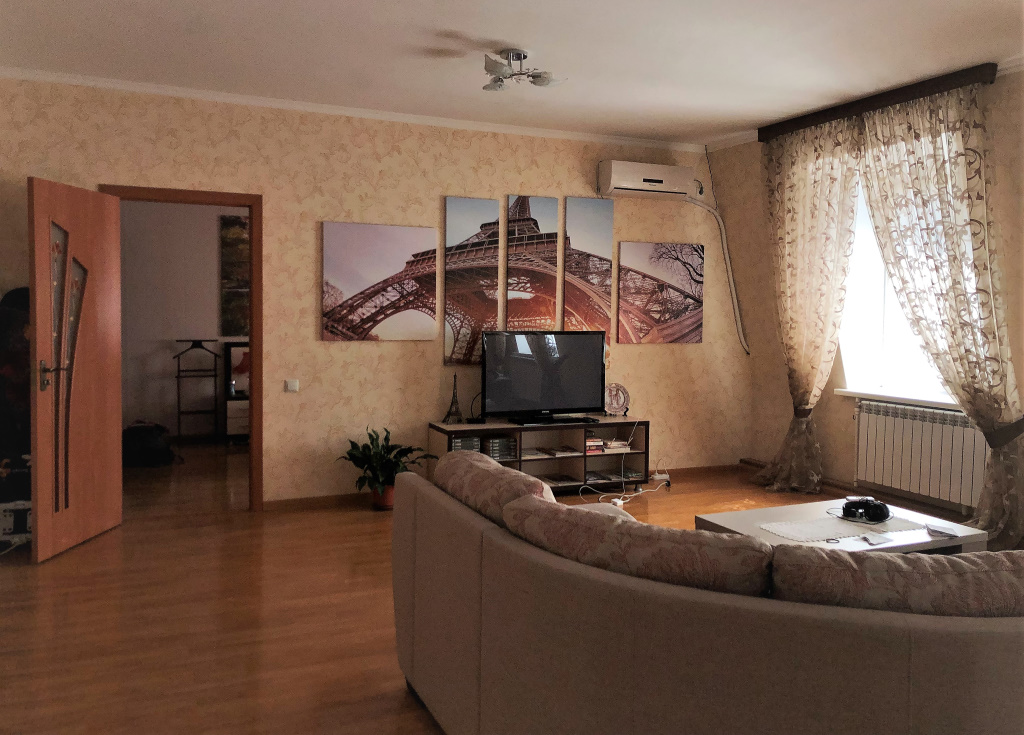
What we did
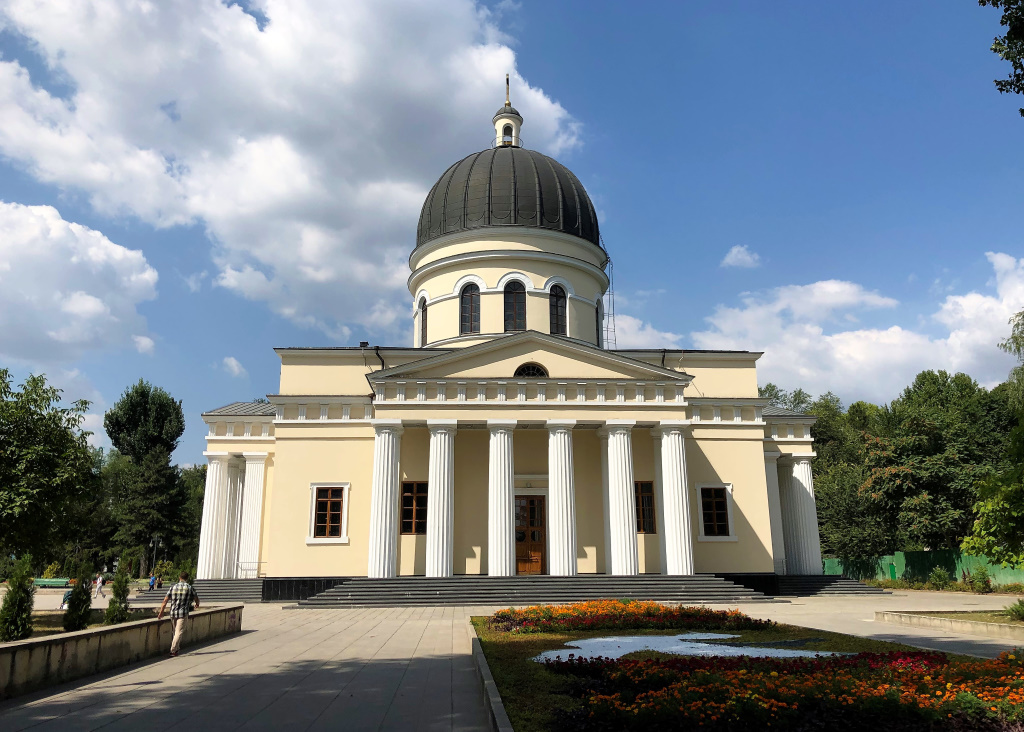
Chișinău is a lovely city just to wander✨ through. Lots of tree-lined✨ and fountained✨ parks, perfect for relief from hot summer days. The center of the city is the Orthodox Cathedral✨ facing off with the Triumphal Arch✨. Though the church is a plain yellow outside, the interior is decked out in golden icons and richly-colored paintings. Kitty-corner is Stephen the Great Park, with its namesake memorialized in a larger-than-life statue✨. Its central alley✨ features busts of great writers and poets.
“The most beautiful things in the world cannot be seen or touched, they are felt with the heart.”
― Antoine de Saint-Exupéry, The Little Prince

It is not✨ an objectively beautiful city✨. “Soviet✨” and “brutalist✨” are the key descriptors for most of the architecture, with “decaying✨” occasionally thrown in for good measure. Rather, it’s the small details✨ that bring out the hidden beauty✨ here. Pastel✨ trim, glittering✨ chapels, art✨ of all✨ sorts✨ and in all✨ places✨, history✨ and culture✨, and a staggering love for Moldova puns✨. Nowhere is this better demonstrated than the aforementioned Valea Morilor Park. Hidden along the lakeshore✨ is a tiny statue✨ of the Little Prince✨.
“What makes the desert beautiful,’ said the little prince, ‘is that somewhere it hides a well…”
― Antoine de Saint-Exupéry, The Little Prince

The national museums are all✨ worth a look, and cost just 10-20 lei each (photography permits are an extra 15 lei or so). The National Art Museum was our favorite✨. The interior’s striking white staircase✨ made it a work of art in itself. We spent a couple hours wandering the galleries✨ and cooling down in the free a/c. Artworks span rich tapestries✨ and rich people✨ to rough-hewn statues✨ and peasant girls✨. Just down the street is the National History Museum✨ with a collection✨ that covers✨ the breadth✨ of Moldova’s pockmarked✨ history✨. The City Museum✨ took just a few minutes to see and is notable for “slice of life✨” trinkets of the past✨, but visiting it in its water tower✨ home grants access to a spectacular view✨ of the city and the rolling countryside.
“For some, who are travelers, the stars are guides. For others they are no more than little lights in the sky.”
― Antoine de Saint-Exupéry, The Little Prince
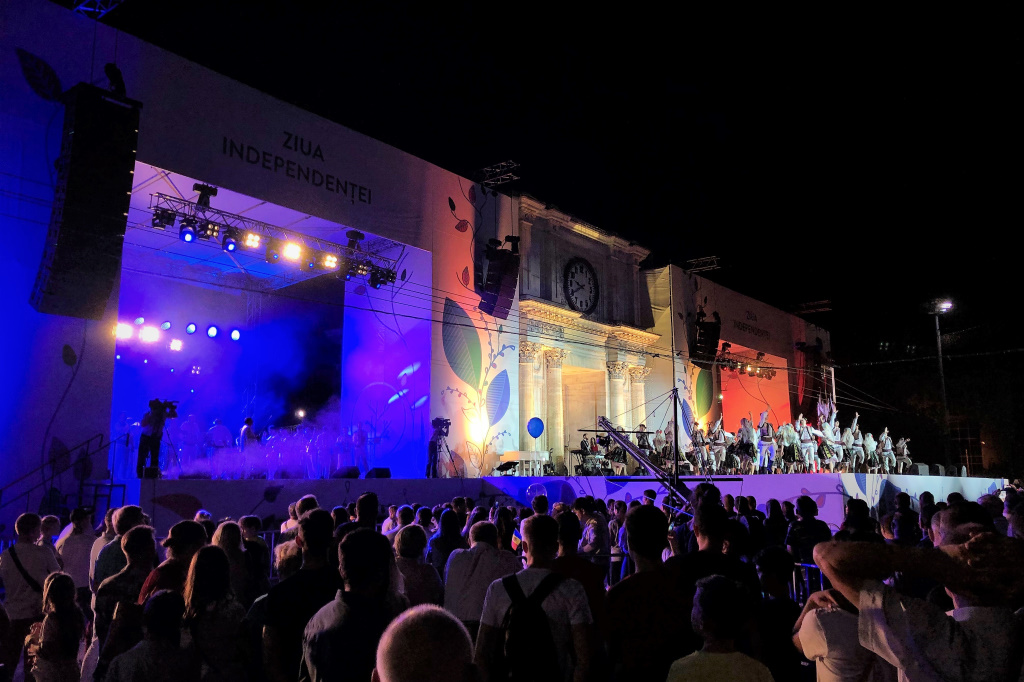
Our stay coincided with a couple of holidays – the 75th anniversary of the Iasi-Chișinău Offensive✨ on 23 August and Moldovan Independence Day✨ on 27 August. It turns out how to celebrate 23 August is contested. The EU calls the day the Remembrance for Victims of Stalinism and Nazism. But in Moldova it has traditionally celebrated the Soviets freeing the city from the Nazi forces. There was a heavily patriotic concert and memorials around the city. Four days later is Independence Day✨. A small market set up by the Cathedral, and extra flags✨ dotted street and buses. The evening was marked by a concert✨ given on a stage built around the Triumphal Arch. Groups performed traditional songs and dances. People in the crowd✨ formed turning circles along with the music. Kids ran around with glow-sticks and balloons. Compared to independence celebrations in other cities, it was small. But that also made it easy to enjoy.
“All grown-ups were once children… but only few of them remember it.”
― Antoine de Saint-Exupéry, The Little Prince

When people know one thing about Moldova, they usually know its wine. Milestii Mici and Cricova are the largest producers. Both are state-owned holdovers from the Soviet era. Both also have massive cellars; Milestii Mici’s underground stretches 200 kilometers. We headed to a wine bar, Carpe Diem✨ (home of Chișinău’s friendliest cat✨), before deciding which to tour. Essentially we were told, “one is the biggest, but the other has better wine.” Cricova it was, and it was a treat. Turns out limestone caves✨ stay refreshingly cool even on the hottest days. Zipping around on an electric tram✨, we zigged our way down underground streets✨ named for wines and zagged✨ through some of Cricova’s 120 kilometers✨ of tunnels. While most of the tunnels are only sparsely given to storage, certain highlights✨ were every bit as impressive✨ as we imagined✨. Most fascinating were the historic✨ and prestigious✨ treasures✨. Cricova cellars wines for world leaders (we spotted Angela Merkel, Vladamir Putin, and John Kerry among them) and has preserved some bottles✨ for more than a hundred years. But the highlight, of course, was the tasting. Tasting rooms ranged from homey✨ to kitschy✨ – ours was decidedly classy. We tried 6 types of wine (plus a glass of sparkling during a short film). These were paired with cheeses, walnuts, and cookies. The wines were indeed quite good, but the overall experience was unlike anything we’ve seen before or since.
“What matters most are the simple pleasures so abundant that we can all enjoy them…”
― Antoine de Saint-Exupéry, The Little Prince

Toward the end of our stay, we took a day trip to Tiraspol, Transnistria. This is either a separate country, or it isn’t. But it looks✨ like a country, and acts✨ like a country… In any case, when Moldova declared independence from the Soviet Union, Transnistria declared their independence✨ from Moldova. Things have stayed pretty much the same✨ ever since. Where Moldova can often appear like it is unintentionally stuck in Soviet times, Transnistria’s hearkening back is very much on purpose. Lenin statues guard the Parliament and Town Hall. Streets are named Lenin, Marx, and 1st of May. The hammer and sickle✨ graces their main flag✨. And their second state flag just happens to be identical to Russia’s, in case anyone wonders about allegiances.
We weren’t sure what to expect given the region’s status. But, honestly, the city✨ was lovely✨. There are parks and statues✨, good transit✨, and a massive Green Market✨ (in a fittingly green building✨). We lunched✨ at Kumanek✨, probably the nicest restaurant✨ in town. We exchanged our money for Transnistrian Rubles, a currency unrecognized anywhere else on earth. In addition to standard bills and coins, there are also plastic chits for smaller denominations. They come in odd shapes and are closer to casino chips or Pogs than coins or bills. Naturally, we wanted some. After coming up short at shops and the tourist info✨ point, we lucked out at the very last minute buying our bus tickets✨ home. The bemused teller started giving us regular change, but we saw the plastic money and our eyes lit up. He laughed as we hastily changed the remainder of our paper for plastic and ran to catch our ride.
“People where you live,’ the little prince said, ‘grow five thousand roses in one garden… yet they don’t find what they’re looking for […] And yet what they’re looking for could be found in a single rose, or a little water…”
― Antoine de Saint-Exupéry, The Little Prince

Food & Drink

Moldova is most famous for its wine, but it has some pretty good staple meals too. The most common was plăcintă, layers of dough wrapping up all kind of goodies. We especially enjoyed ones from Ştefaniţa, just down the block from our apartment. They came filled with cabbage, cheese, apples, plums, whatever happened to be in season. Nearly every restaurant in the city, even chains like La Placinte, serve it, as well as another traditional meal, mămăliga. This dense cornmeal porridge✨ comes with sour cream, cheese, and often a side of pork. Another popular spot is Andy’s Pizza, with dozens of locations. We tried a “diablo.” It wasn’t terribly spicy, but the crust was just the right thickness and came topped with tasty peppers and salami.
When cooking at home, most of our ingredients came from Nr. 1, Fidesco, and Linella. Sadly, the massive central market was a bit too far for everyday jaunts. There were still plenty of options though. We pan-fried or baked game hens✨, duck, goose legs✨, pork chops, dumplings✨, and veggies. A happy, honey-centric market popped up by the Opera one weekend, and 30 lei (<$2) purchased an incredibly tasty jar of local honey✨. We found a type of mayonnaise✨ made from quail eggs and pistachios that became a fast favorite. The chips tended toward the weirder✨ side – one brand was so buttery✨ it was hard to believe it was even potato.

But yes, in the end, a trip to Moldova is all about the wine. As mentioned above, most of the wine comes from a few mega-producers: Cricova✨, Milestii Mici, and Castel Mimi✨. It resembled Chile in that way. But as we learned in Chile, “most” is not “all.” Just about everyone is happy to prescribe wines from smaller producers. Even the tourist bureau chimed in, offering worthy recommendations from Atu and Asconi. Our local wine shop/absolute gem was Carpe Diem. It was the best place to pick up all those less-ubiquitous options; they also happened to make our favorite wine✨ of this stay. Compared to our yardsticks of great-wine-at-a-great-price (Portugal and Argentina), Moldova could definitely hang.
Their beer✨ in contrast is decidedly average. It comes in large quantities✨ but without much else going for it. The sole exception was a draft we had at Kumanek✨ in Tiraspol. But if wine isn’t your thing, perhaps liquor made from wine is. Divin is the name of the local brandy, cognac in all but name. The most notable brand, KVINT, is based in Tiraspol. We took photos✨ by the distillery✨ when we visited and sampled the product✨ back in Chișinău (also their wine✨). While we give the edge Georgian brandies, divin ranked higher than any of the region’s rakijas or țuicăs.
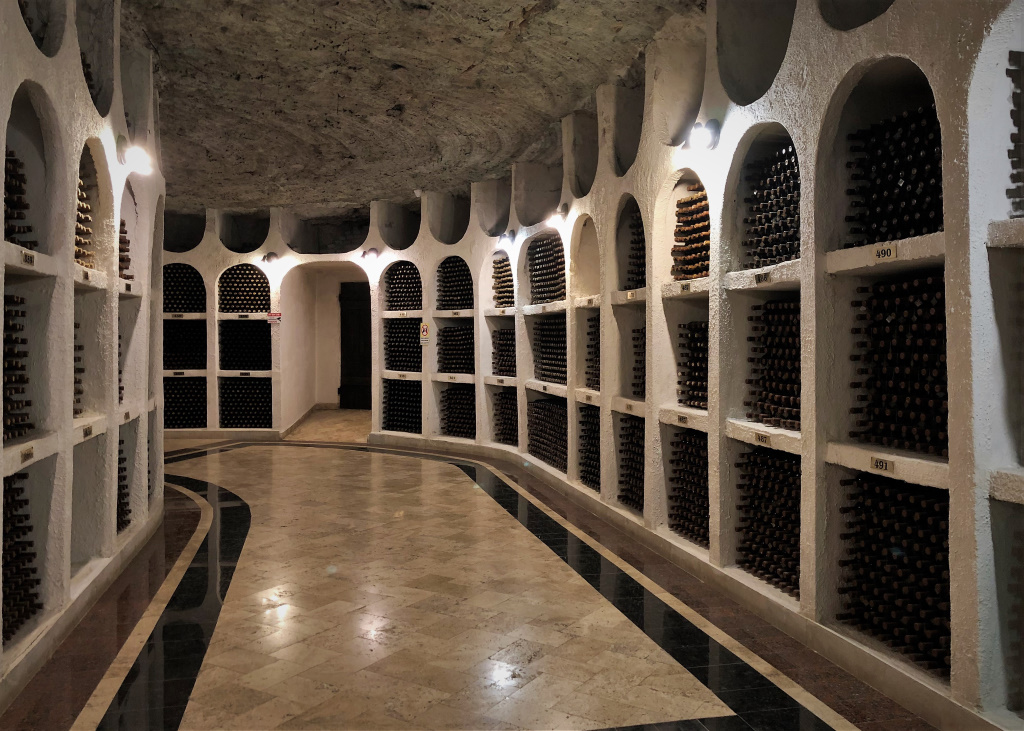
Getting around

Public transit goes everywhere in Chișinău✨ and the country✨. Trolleybuses cost 2 lei (~$0.11), marshrutkas cost 3 lei, and both run frequently. Tickets can be purchased on board. On buses, a collector takes fares and gives change; on marshrutkas it is standard to pay the driver upon entry. There are no transfers, so each segment of a route requires a new ticket. We used the EasyWay↗ app to check out routes and arrival times. Going a bit further out✨, like to Cricova, meant looking for the suburban routes. These are only slightly more expensive. To get from central Chișinău to Cricova Winery was just 4.5 lei each ($0.25).
We arrived by minibus from Iasi, Romania. The trip took about 3.5 hours, and we were got off within walking distance of the center, though the final stop for the van was the South Bus Station. The cost was less than $10 per person, including luggage. Exiting Romania and entering Moldova at the border was easy – guards boarded at each post and collected passports, returning them stamped 15 minutes later.
For trips inside Moldova or Transnistria, most buses and marshrutkas leave from the Central Bus Station, directly adjoining the main market. Schedules and prices can be found here↗. Buses for international destinations leave from either the South or North Bus Station✨.
Uber↗ is not available in Chișinău. Instead, we used Yandex↗ (available on Apple and Android). Unlike Uber, payments are made in cash to the driver. The app provides a cost estimate before pick up, usually accurate to within a few lei.

Stuff of interest
This month’s SIMs↗ came from Orange. For less than $3 each we got SIMs loaded with one gig of data and local talk time, good for 15 days. After the initial period was over, we recharged at one of dozens of kiosks✨ placed in malls and shops.
A few words of caution: Many streets and the interior building stairwells are not well-lit at night. We occasionally used our phones’ flashlights or a small headlamp to find our way. There are stray dogs✨ throughout the city, even in the main squares. Generally they ignore passers-by, but approach with caution.
Romanian is the most widely-spoken language. Russian is also quite common. Being able to sound out or read Cyrillic✨ can be helpful as lots of products are imported from Russia and Ukraine. English is less understood here, but Google Translate always got us through.
Plastic and metal can be recycled at large yellow bins placed alongside most garbage containers in the city. Glass and paper are more difficult to dispose of properly, though there are small bins in most parks and occasional large bins we discovered as we were walking.
Parks in Chișinău has some of the cleverest signs – like this no smoking✨ sign near a playground, and this one✨ reminding dog owners to clean up after their pets.
Kevin had a nagging medical issue and decided to have a minor surgery to repair it. Based on reviews, he chose Medpark International Hospital. Overall, it was a positive experience with minimal complications. Medical professionals aren’t as given to explanations as we are used to, but we knew that going in✨. What we didn’t know until several hours after the surgery✨ was that what was an outpatient procedure in America was inpatient in Moldova – for TWO DAYS! But we were billed in advance as part of a package operation (pun intended), and everything was included: operation, anesthesia, private room, even✨ meals✨. All-up, the cost✨ was less than our co-pay or deductible would have been in the States.

What we learned
Chișinău is, in essence, the very reason why we travel. It’s the kind of place we enter with no expectations and leave with a new place to call home. Where it’s easier than we dreamed to fall in love and harder than we’d hope to break up. But if we didn’t say goodbye to this Chișinău, how would we ever find our next one?
“You know – one loves the sunset, when one is so sad.”
― Antoine de Saint-Exupéry, The Little Prince





